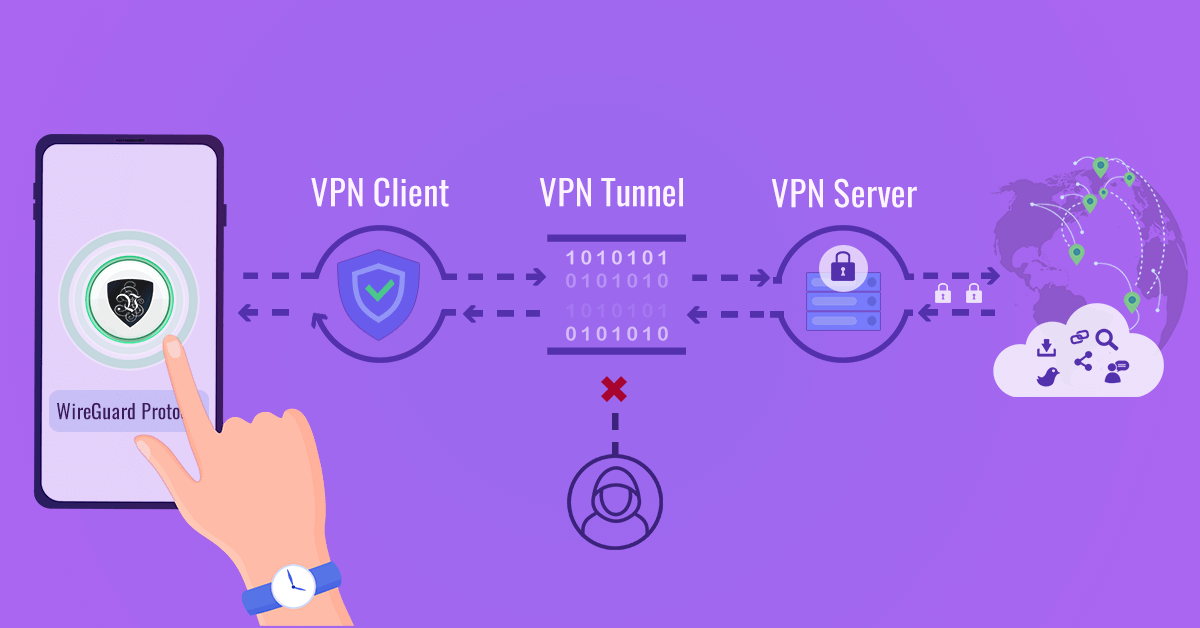Featured
Table of Contents
What Is The Wireguard Vpn Protocol?
It is presently under heavy advancement, however currently it might be considered the most safe, simplest to use, and most basic VPN service in the market. Wire, Guard intends to be as easy to configure and deploy as SSH. A VPN connection is made merely by exchanging very easy public secrets exactly like exchanging SSH keys and all the rest is transparently managed by Wire, Guard.
Wire, Guard provides an extremely standard yet effective user interface. Wire, Guard has been developed with ease-of-implementation and simplicity in mind.
, which goes into more information on the procedure, cryptography, and fundamentals.

This user interface functions as a tunnel interface. Wire, Guard associates tunnel IP addresses with public keys and remote endpoints. When the interface sends out a package to a peer, it does the following: This packet is suggested for 192. 168.30. 8. Which peer is that? Let me look ... Okay, it's for peer ABCDEFGH.
What Is Wireguard?
If not, drop it. Behind the scenes there is much happening to offer correct personal privacy, authenticity, and perfect forward secrecy, utilizing modern cryptography. At the heart of Wire, Guard is an idea called Cryptokey Routing, which works by associating public keys with a list of tunnel IP addresses that are allowed inside the tunnel (what is wireguard protocol and how does it work?).

Each peer has a public key. Public secrets are brief and basic, and are used by peers to confirm each other. They can be circulated for use in setup files by any out-of-band technique, similar to how one might send their SSH public secret to a pal for access to a shell server.
69:51820 Allowed, IPs = 0. 0.0. 0/0 In the server setup, each peer (a client) will have the ability to send packages to the network user interface with a source IP matching his corresponding list of permitted IPs. When a package is gotten by the server from peer g, N65Bk, IK ..., after being decrypted and validated, if its source IP is 10.
230, then it's allowed onto the interface; otherwise it's dropped. In the server setup, when the network interface wants to send a package to a peer (a client), it takes a look at that package's location IP and compares it to each peer's list of allowed IPs to see which peer to send it to - what is wireguard protocol and how does it work?.
Wireguard Vs Openvpn: Which Protocol Should You Use?

10.10. 230, it will encrypt it using the general public secret of peer g, N65Bk, IK ..., and after that send it to that peer's most recent Web endpoint. In the client configuration, its single peer (the server) will have the ability to send out packages to the network user interface with any source IP (given that 0.
0/0 is a wildcard). For instance, when a package is received from peer HIgo9x, Nz ..., if it decrypts and verifies properly, with any source IP, then it's enabled onto the user interface; otherwise it's dropped. In the customer setup, when the network user interface wishes to send a package to its single peer (the server), it will encrypt packages for the single peer with any location IP address (since 0.
0/0 is a wildcard). For example, if the network interface is asked to send out a package with any location IP, it will secure it using the general public secret of the single peer HIgo9x, Nz ..., and then send it to the single peer's newest Web endpoint. Simply put, when sending out packages, the list of permitted IPs behaves as a sort of routing table, and when getting packets, the list of permitted IPs behaves as a sort of access control list.
Any combination of IPv4 and IPv6 can be utilized, for any of the fields. Wire, Guard is totally efficient in encapsulating one inside the other if required. Since all packages sent on the Wire, Guard user interface are encrypted and verified, and due to the fact that there is such a tight coupling in between the identity of a peer and the allowed IP address of a peer, system administrators do not need complex firewall extensions, such as when it comes to IPsec, but rather they can just match on "is it from this IP? on this user interface?", and be ensured that it is a safe and secure and authentic package.
What Is Wireguard: Vpn Protocols 101
The customer configuration consists of a preliminary endpoint of its single peer (the server), so that it understands where to send encrypted data before it has received encrypted information. The server configuration doesn't have any preliminary endpoints of its peers (the customers). This is because the server finds the endpoint of its peers by taking a look at from where correctly authenticated information originates.
If you're having trouble establishing Wire, Guard or using it, the finest location to get aid is the #wireguard IRC channel on Libera. Chat. We likewise talk about advancement jobs there and plan the future of the project. Get associated with the Wire, Guard development conversation by signing up with the subscriber list.

Do not send non-security-related concerns to this e-mail alias. Do not send security-related issues to different email addresses.
Wire, Guard is much faster than Open, VPN. It takes in 15% less information, handles network modifications much better, and seems secure. However, Open, VPN has actually been tried and tested, is more privacy-friendly, and is supported by a larger variety of VPNs.
What Is The Wireguard Vpn And How Does It Compare To ...
We may receive compensation from the items and services mentioned in this story, but the viewpoints are the author's own. We have actually not consisted of all offered products or offers. (VPNs) have actually taken off, gaining appeal with those looking for additional security, privacy, and versatility.
In this short article Wire, Guard is a brand-new, open-source VPN procedure created with cutting edge cryptography, which is the practice of coding delicate info so only the desired receivers can translate its meaning. Designer Jason A.
Working with Wire, Guard couldn't be easier. Wire, Guard keeps it simple by operating with fewer than 4,000 lines of code compared to older VPN procedures that normally use thousands more.
Latest Posts
Why You Need A Vpn, And How To Choose The Right One
Beginner's Guide To Vpn - Everything You Need [5000+ ...
Best Vpns For Small Businesses (2023)